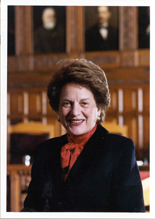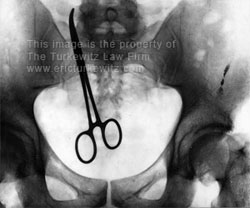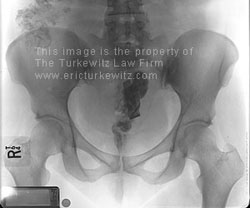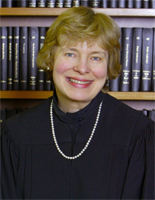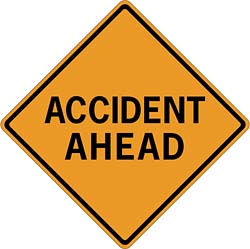 I was in a car accident Friday night. Multiple car collision. On the Hutchinson River Parkway.
I was in a car accident Friday night. Multiple car collision. On the Hutchinson River Parkway.
For those unfamiliar with the road, the Hutch is a narrow 1940s era parkway running up from the Bronx to Westchester, twisting and turning and rolling over hills. There is no such thing as straight and level. There are no lights on the Westchester portion where my accident happened. And locals often go 70 mph. It’s a major thoroughfare and very dangerous.
Traveling in the left lane I started to close unexpectedly fast on the car in front of me. Unexpected because no brake lights flashed and my speed hadn’t changed. I braked easily at first, then realized the car in front was stopping or had already come to a stop, and braked harder. Calling this a miserable place to stop would be a significant understatement.
I glanced in the rear view mirror and saw others close behind, and getting closer. I eased off the brake so my stop wouldn’t be quite so hard, hoping to give others some extra yardage to work with, and hoping that if any impact occurred it would at least be at a lower speed.
I finally came to a stop — or as lawyers like to redundantly say, I came to a full and complete stop, because full stop and complete stop aren’t verbose enough — and held my breath.
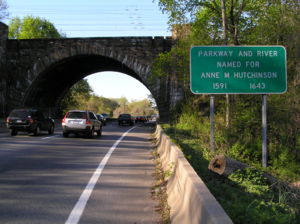
Then I heard a crunch. Thankfully, it wasn’t me that got crunched.
Then there was a second crunch. My car lurched forward. OK, that was me. But I had left enough room, and the impact wasn’t hard enough to propel me into the car that had stopped in front of me.
The first thing out of my mouth was, “Don’t get out!” to my wife. Our kids were thankfully not with us. I hit the hazard lights.
Now what? Dark parkway, cars rapidly bunching up behind us, others maneuvering and passing in the right hand lane, headlights flashing by us. I handed my cell phone to my wife to call 911, though neither of us were quite sure where on the parkway we exactly were. Despite having traveled the road so often, we were oddly disoriented, a result no doubt of the auto pilot mode we each go into when doing something familiar. My wife wasn’t sure what to tell the 911 operator.
I waited about a minute, saw others in the rear view mirror outside their cars, and slipped out by the guardrail separating northbound from southbound to see if anyone was hurt. The folks in the car in front of me yelled that their car broke down. No one reported an injury.
Now comes the lawyer part. One part of my brain immediately thought it was important to note the location of each car and the sequence of events and, at a bare minimum, to get the license plate information. The smarter part told me me that the sequence was utterly meaningless if I got hit by another in the darkness.
The car in front started to get pushed by its occupants across the right lane to the shoulder, and I became aware that at least one of the cars behind me was also now on the shoulder. The first cop arrived and I deeply welcomed all those flashy, flashy lights so that I could do the same with a bit more safety than my predecessors.
But now the car that had died in front of me was gone! Two occupants of a car behind me went running after it as it was pushed to nearby exit ramp with a downward slope, and apparently was driven off.
Discussion with the other drivers led to this reconstruction: Mystery car with several passengers stopped. I stopped. Car following me with four or so 20-somethings stopped. The last car, with a single driver and no passengers, hit both the guy behind me and somehow then me, ending up directly behind me.
And the 20-somethings that went running after the mystery car were steamed! They say the mystery car had no license plates. The also say that mystery car was the reason for the accident. (I didn”t hear them discuss the car that was following too close to stop in time.)
Now having taken a few depositions in car accident cases and tried one or two of these, a few things were immediately obvious. First, accident reconstruction from the standpoint of the driver is very hard. I think of the questions I have asked over the years and understand the difficulty answering them, regarding the who, what, when, where, why and how of the accident and the attempt to obtain hard facts of numerous fluctuating dynamics in the seconds before a crash. How fast? How far? What were other cars doing? What were you doing? Over and over for different periods of time on a dark parkway. And those questions are often asked years after the accident occurred.
After the cops directed us off the parkway at the exit for the sake of safety — all three cars were drivable — they did a bit of reconstruction with interviews.
But I had this twinge in my neck that I hadn’t previously noticed. Was this a real twinge, or an anxiety-ridden figment of my imagination? It was so slight that I might have even had it before the accident but not appreciated it. My fear, of course, was that because many neck injuries aren’t apparent until the next day or two, that something might have happened. I let one of the cops know about my neck as he handed me back my license, registration and insurance card that I had given him, and he told me he would note it on the report.
We went home. I took two ibuprofen, not for actual pain, but as a precaution against some type of soft tissue injury that I might have experienced. I went to sleep wondering what I would feel like in the morning.
The answer, thankfully, was that I felt just fine. I ran for an hour. I went to Costco with my wife, schlepped stuff around the house, and went out to dinner with friends. I felt good today too, and went for another run. I expect that if I have any soreness tomorrow, it will only be from running.
There is a point to this story. When I sat jury duty many years ago, I considered it an invaluable lesson in being a trial lawyer. No lawyer should ever try to avoid jury duty. Sitting in the box was a brand new perspective that is impossible to appreciate from any other spot inside the courtroom well. (See: Personal Injury Lawyer Talks Himself Off Jury Duty)
And I think the same will be true for being in an accident and trying to reconstruct it from the inside. But unlike jury duty, I would do everything possible to avoid it.
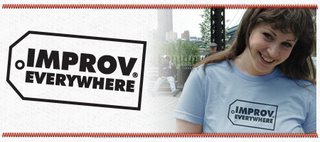 Best Buy clearly doesn’t like being the butt of a joke. We know this because a group called Improv Everywhere sent about 80 people into one of their New York stores wearing blue polo shirts to stand around. They did not claim to be employees. They just stood around dressed like them. For yucks. Now the lawyer letters are flying.
Best Buy clearly doesn’t like being the butt of a joke. We know this because a group called Improv Everywhere sent about 80 people into one of their New York stores wearing blue polo shirts to stand around. They did not claim to be employees. They just stood around dressed like them. For yucks. Now the lawyer letters are flying.